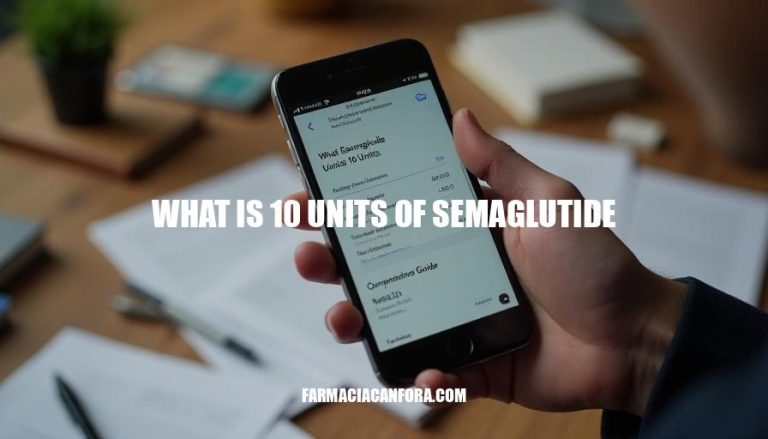


Semaglutide is a medicine that helps people with type 2 diabetes and those who want to lose weight. It works by helping the body make more insulin and less glucagon, which keeps blood sugar levels under control. Semaglutide comes as an injection, usually measured in units or milligrams.
10 units of semaglutide correspond to approximately 0.25 mg in most standard formulations. This dosage is often part of the initial phase in the semaglutide titration schedule, designed to help the body acclimate to the medication gradually.
Proper Administration:
Subcutaneous Injection: Semaglutide is administered as a subcutaneous injection, typically once a week. The injection is usually given in the abdomen, thigh, or upper arm.
Preparation: Use a sterile syringe and needle to draw up the prescribed dose.
Ensure the medication is at room temperature before injecting.
Injection Technique: Clean the injection site with an alcohol swab, pinch the skin to create a fold, insert the needle at a 45 to 90-degree angle, and inject the medication slowly.
Measurement and Administration:
Units to Milligrams Conversion: 10 units of semaglutide typically translate to approximately 0.25 mg. Always refer to the specific dosage chart provided by the manufacturer or your healthcare provider for accurate conversion.
Titration Schedule: The dosage may be gradually increased over several weeks or months to reach the therapeutic dose. Follow the titration schedule prescribed by your healthcare provider to avoid adverse effects.
Important Considerations and Instructions:
Storage: Store semaglutide in the refrigerator, but allow it to reach room temperature before injecting.
Side Effects: Be aware of potential side effects such as nausea, vomiting, diarrhea, and constipation.
Report any severe or persistent side effects to your healthcare provider.
Monitoring: Regular monitoring of blood glucose levels, kidney function, and other relevant parameters is essential while taking semaglutide.
Diet and Exercise: Continue following a healthy diet and exercise regimen as recommended by your healthcare provider to maximize the benefits of semaglutide.
Always follow the specific instructions provided by your healthcare provider and refer to the medication guide for detailed information on administration and dosage adjustments.
10 units of semaglutide correspond to approximately 0.25 mg in most standard formulations, which is often part of the initial phase in the semaglutide titration schedule.
It’s essential to accurately convert units to milligrams and follow the specific dosage chart provided by the manufacturer or healthcare provider for precise dosing.
Adhering to the prescribed titration schedule is crucial to avoid adverse effects and ensure the medication works effectively.
Always refer to the medication guide and consult with a healthcare provider for detailed information on administration, dosage adjustments, and potential side effects.